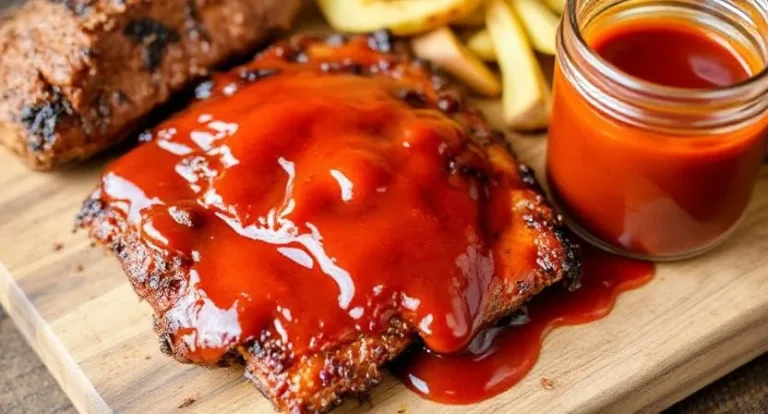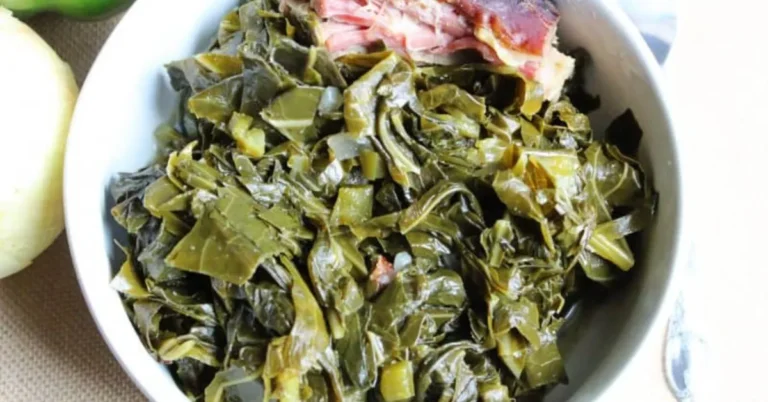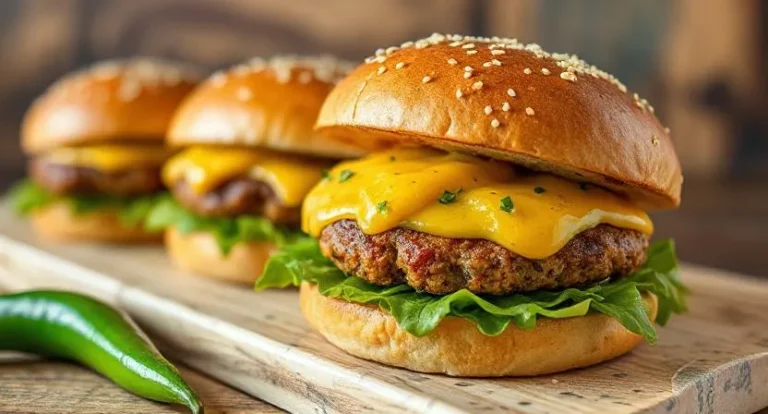Maryland Crab Cakes
Maryland Crab Cakes are a treasured gem of the Chesapeake Bay, steeped in rich tradition and culinary prestige. As a shining emblem of Maryland’s coastal pride, these delectable morsels have earned their place in the pantheon of American seafood classics. With a history as vibrant as their flavor, Maryland crab cakes have enchanted gourmands both locally and far beyond, lauded for their pure, unadulterated crab essence. This guide delves into the charm of Maryland crab cakes and walks you through crafting your own at home, preserving their authenticity every step of the way.
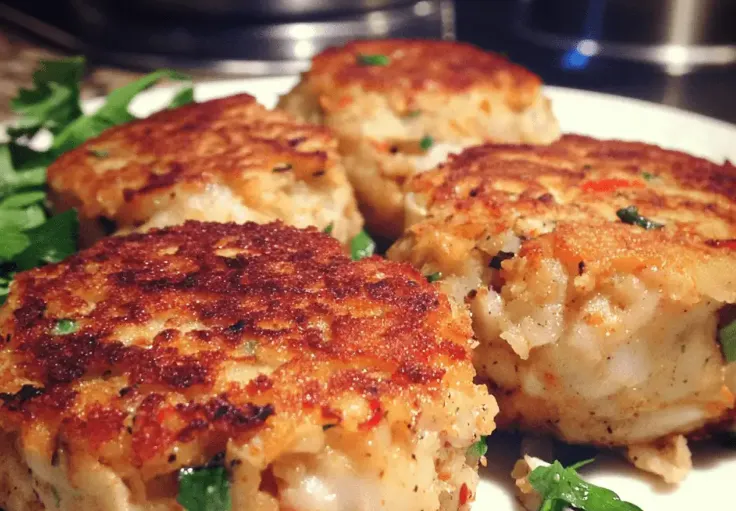
What Makes Maryland Crab Cakes Special
What sets Maryland Crab Cakes apart is their uncompromising devotion to simplicity and premium ingredients. At the heart of this delicacy lies succulent lump crabmeat—preferably harvested from Chesapeake Bay blue crabs, famed for their tender sweetness and oceanic richness. Unlike lesser interpretations, the Maryland style shuns excessive fillers, relying solely on subtle binders like mayonnaise and crushed saltines to maintain structural integrity without masking the crab’s natural brilliance. A gentle pan-fry technique ensures a golden crust, locking in moisture while offering a crisp exterior. These hallmarks cement Maryland Crab Cakes as an enduring favorite among seafood aficionados.
What You’ll Need for Maryland Crab Cakes
- 1 pound fresh lump crabmeat, meticulously picked over for shells
- 2/3 cup crushed saltine crackers
- 1 large egg, beaten
- 1/4 cup mayonnaise
- 1 teaspoon Dijon mustard
- 1 teaspoon Worcestershire sauce
- 1 teaspoon Old Bay seasoning
- 1 tablespoon finely chopped fresh parsley
- 1 tablespoon fresh lemon juice
- 1/4 teaspoon salt
- 1/4 teaspoon freshly ground black pepper
- 2 tablespoons unsalted butter
- 2 tablespoons vegetable oil
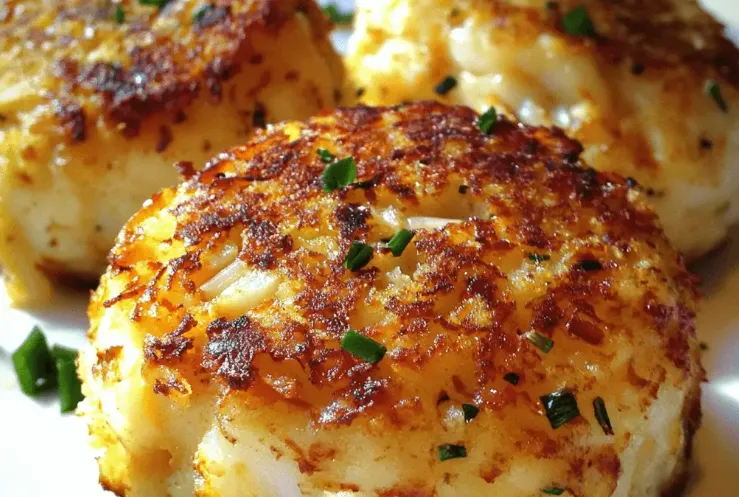
How to Make Maryland Crab Cakes
In a spacious mixing bowl, gently combine the lump crabmeat and crushed saltines, taking care not to shred the delicate crab pieces. In a separate bowl, whisk together the egg, mayonnaise, Dijon mustard, Worcestershire sauce, Old Bay seasoning, chopped parsley, and lemon juice until harmonious. Drizzle this mixture over the crab and fold carefully with a rubber spatula, seasoning lightly with salt and pepper.
Shape the mixture into 3-inch-wide cakes; expect to create 6 to 8 generous portions. Arrange the cakes on a parchment-lined baking sheet, cover loosely with plastic wrap, and refrigerate for at least one hour to firm up the structure.
When ready to cook, heat the butter and vegetable oil in a large skillet over medium heat. Once shimmering, gently lay in the crab cakes, cooking in batches to avoid overcrowding. Sauté for 3–4 minutes per side, achieving a golden, appetizing crust. Adjust the heat as needed to prevent over-browning. Transfer the finished crab cakes to a paper towel-lined plate to absorb excess oil. Serve immediately, accompanied by tartar sauce, lemon wedges, and a sprinkle of fresh parsley for a seafood feast par excellence.
Times, Calories, Servings
- Preparation Time: 20 minutes
- Cooking Time: 15 minutes
- Total Time: 35 minutes (excluding chilling)
- Calories: Approximately 200 per cake
- Servings: 6–8 crab cakes
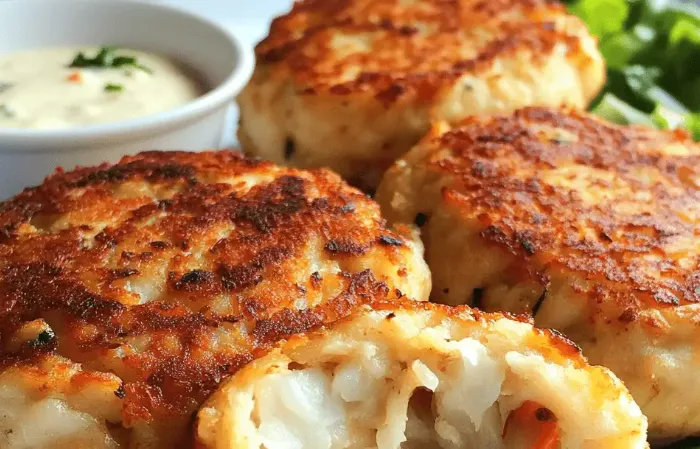
How to Store Maryland Crab Cakes
Should you have the fortune of leftovers, Maryland Crab Cakes store beautifully. For refrigeration, place cooled cakes into an airtight container for up to two days. To reheat, bake in a 350°F (175°C) oven for about 10 minutes until warmed through.
For longer storage, freeze the cooled cakes in a single layer on a baking sheet, then transfer to a freezer-safe bag or container. Label accordingly and freeze for up to three months. Thaw overnight in the refrigerator before reheating in the oven.
Tips for a Perfect Maryland Crab Cake
Select Premium Crab Meat:
Fresh lump crab meat imparts an unmatched flavor and texture. In its absence, a top-tier pasteurized option can substitute admirably.
Minimize Fillers:
The less interference from binders, the better. The crab’s delicate flavor should reign supreme.
Cooking Method Matters:
Pan-frying yields a delightful crust, but for a lighter option, baking works wonders. For extra crunch, broiling is also an excellent choice.
Season Thoughtfully:
While Old Bay is traditional, a splash of lemon or a touch of cayenne pepper can enhance flavor without overwhelming the dish.
Chill the Mixture:
Refrigerating the formed cakes prior to cooking helps them stay intact during frying or baking.
The Best Variations of Maryland Crab Cakes
- Gluten-Free: Replace saltines with gluten-free breadcrumbs or almond flour.
- Keto-Friendly: Use crushed pork rinds instead of breadcrumbs for a low-carb alternative.
- Spicy Variation: Incorporate diced jalapeños, chili flakes, or a dash of hot sauce for an extra kick.
- Mediterranean Flair: Fold in chopped dill, parsley, and crumbled feta cheese for a coastal Mediterranean twist.
What to Serve with Maryland Crab Cakes
Salads:
Pair with a peppery arugula salad tossed in lemon vinaigrette for a refreshing contrast.
Vegetable Sides:
Roasted asparagus, grilled corn, or succotash complement the cakes with their natural sweetness.
Sauces:
Enhance with a tangy remoulade, classic tartar sauce, or a homemade aioli.
Drinks:
A crisp, chilled Chardonnay or a robust, hoppy IPA harmonizes beautifully with the rich, savory crab.
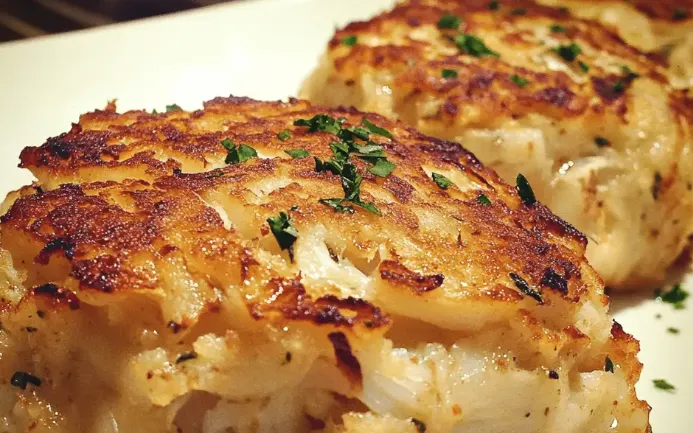
Frequently Asked Questions
How do I prevent crab cakes from crumbling?
Chilling before cooking and handling with care are key to maintaining their integrity.
Can crab cakes be frozen?
Absolutely. Freeze either raw or cooked, separating each cake with parchment paper.
How long do leftover crab cakes last?
Stored in an airtight container, they remain fresh for up to three days in the refrigerator.
What’s the difference between lump and backfin crab meat?
Lump consists of large, whole pieces from the crab’s body, while backfin is a blend of smaller body and claw meat.
Is Old Bay seasoning essential?
While traditional, you can approximate the flavor using a blend of paprika, celery salt, and related spices if needed.
Conclusion
Maryland Crab Cakes capture the soul of Chesapeake Bay in every bite, bringing a legacy of maritime tradition to your table. Their adaptability invites culinary creativity while respecting the delicate purity that makes them iconic. Whether served as a luxurious main course or part of a casual gathering, these crab cakes promise to impress. So roll up your sleeves, gather your ingredients, and savor the satisfaction of creating an authentic Maryland treasure in your own kitchen. Bon appéti


